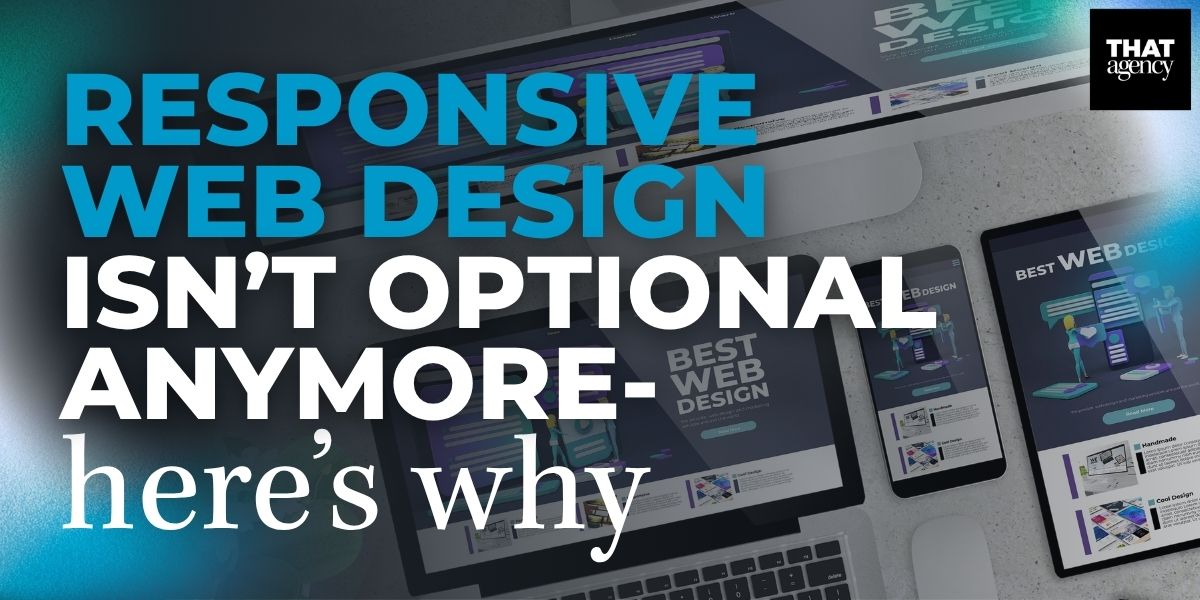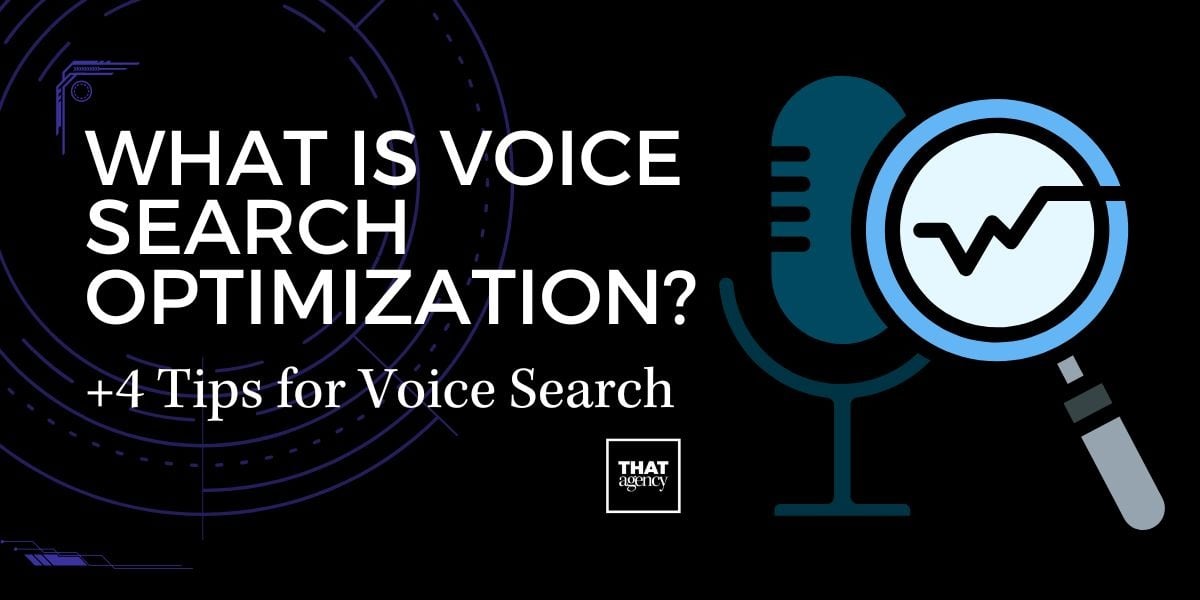Responsive web design used to be something extra, now, it’s a must-have. Today, more people use their phones and tablets to browse the web than ever before. In fact, over 60% of internet traffic comes from mobile devices. If your website doesn’t look good or work well on a smaller screen, you're losing visitors, and potential customers.

For businesses trying to grow online, a responsive website is no longer just a nice feature. It’s something your business needs to compete. Platforms like WordPress make it easier than ever to build websites that work on all devices, big or small.
In this post, we’ll explain why responsive web design is so important, how it helps your business, and how WordPress web design plays a key role in making your website mobile-friendly.
Why Responsive Web Design Is So Important
If your website doesn’t work well on all devices, like phones, tablets, and computers, you could be losing visitors and customers. That’s why responsive web design is so important. A responsive website automatically changes its layout and design to fit whatever screen someone is using. This improves how people experience your site and helps your business in big ways.
Let’s break down the top reasons why responsive web design matters, and what it means for your business.
1. People Use All Kinds of Devices to Go Online
Your website visitors are not just sitting at a desk using a computer. They could be checking your site while:
- Waiting in line at a store
- Watching TV with a tablet in hand
- Walking around with a smartphone
- Using a smart TV or even a gaming console
That means your website needs to work well on all screen sizes, from tiny smartphone screens to big desktop monitors.
What happens if your website isn’t responsive?
- Text may be too small to read
- Images may not fit the screen
- Buttons may be hard to tap
- Menus may be confusing or broken
- Pages may load slowly on mobile devices
Any of these problems can make users frustrated. Most won’t stick around, they’ll leave and go to a competitor’s site instead.
Why does this matter for your business?
- You could lose leads or sales
- People might think your business is outdated or unprofessional
- You might get more negative reviews or bounce rates
What responsive design does:
- Automatically resizes content to fit the screen
- Makes navigation and buttons easier to use
- Ensures fast loading times on all devices
- Helps users stay longer and find what they need quickly
A responsive site gives people a smooth experience no matter how they visit, helping them stay longer and engage more with your business.
2. Google Cares About Mobile Design (A Lot)
In 2020, Google made a big change: it started using mobile-first indexing. This means that Google looks at the mobile version of your website first to decide how to rank it in search results.
What is mobile-first indexing?
- Google uses the mobile version of your website as the main version when analyzing content
- If your mobile site is hard to use, Google may rank it lower, even if your desktop site looks great
Why should you care?
- Lower search rankings = fewer people finding your business online
- A poor mobile experience means fewer clicks, fewer leads, and fewer customers
How responsive design helps:
- Makes sure your mobile content is just as strong as your desktop content
- Keeps your site readable, fast, and easy to use on all screens
- Improves your chances of ranking higher in Google search results
Pro Tip: Use Google’s Mobile-Friendly Test to check if your site is responsive.
If your website isn’t responsive, Google may not show it to users, no matter how good your business is.
3. It Helps You Get More Customers
A website should help your business grow. But if it’s hard to use on mobile, it may be doing the opposite.
How does a bad mobile experience affect customers?
- They leave quickly without learning about your services
- They struggle to click on buttons or fill out forms
- They don’t trust a site that looks broken or messy
What do most users expect?
- A fast, smooth experience
- A site that looks professional on any device
- Easy navigation, simple forms, and quick answers
More than ever, customers are making decisions on their phones, whether it’s booking a service, placing an order, or calling your office.
Did You Know? According to Statista, over 70% of online shopping is now done on mobile devices. Even B2B buyers often do research and compare services on their phones before making decisions.
What responsive design does:
- Makes it easier for people to take action (like clicking a call-to-action or filling out a form)
- Builds trust because your site looks modern and works properly
- Encourages users to stay longer and come back again
Benefits of Responsive Design for Conversions:
- Higher chances of lead generation
- More form submissions
- Increased sales
- Better reviews and return visits
A responsive site supports your customers’ journey from start to finish, and helps your business make more sales and build stronger relationships.
Common Questions About Responsive Web Design
Can I just build a separate mobile site instead? You can, but it’s not recommended. Having two versions of your site makes updates harder, confuses search engines, and creates more room for error. A responsive site does all the work with just one version.
Does responsive design cost more? While there may be an upfront investment to redesign your site, it often saves money long-term. You don’t have to build and manage multiple versions, and you get better results from search engines and users.
How do I know if my website is responsive? Try viewing it on different devices, or use a free tool like Google’s Mobile-Friendly Test. You can also ask a web design expert, like THAT Agency, for a full review.
How Responsive Web Design Helps With SEO
Search Engine Optimization (SEO) is what helps your website show up when people search for things on Google. Many people think SEO is only about using the right keywords. While keywords are important, they’re only part of the picture. Google also looks at how well your website performs and how easy it is to use, especially on mobile devices.
Responsive web design plays a big role in how search engines view your site. If your website adjusts properly to different screen sizes, loads quickly, and keeps people on the page, your chances of ranking higher in search results improve.
Here’s a breakdown of how responsive design supports SEO and helps your business get found online.

Key Ways Responsive Web Design Improves SEO
1. Faster Loading Times
- Responsive websites are designed to load quickly on all devices.
- Fast loading speeds help reduce bounce rates (when users leave right away).
- Google favors websites that load fast because it improves the user experience.
Why it matters: A slow website frustrates users. They’re more likely to leave and go to a competitor’s site. Google sees this behavior as a sign that your site isn’t helpful or user-friendly.
2. Longer Time on Site
- If your website is easy to read and navigate on mobile, users are more likely to stay longer.
- Longer visits tell search engines your content is useful and engaging.
Why it matters: The longer people stay on your website, the more likely they are to explore your products or services, and the more likely search engines are to see your site as valuable.
3. Better Layout and Readability
- Responsive design adjusts fonts, images, and content spacing to fit different screen sizes.
- This improves how your content looks and makes it easier to read on any device.
Why it matters: If users struggle to read your content or find what they’re looking for, they’ll leave quickly. A clean, readable layout helps users find answers fast, and encourages them to take action.
4. Easier Crawling by Search Engines
- Search engines use bots to “crawl” your website and understand your content.
- A responsive site is easier to crawl because all your content is in one place.
- There’s no need for separate mobile and desktop versions.
Why it matters: When Google can crawl and index your site more easily, your content has a better chance of showing up in search results. It also avoids problems like duplicate content or conflicting versions of the same page.
5. One URL for All Devices
- A responsive website uses the same URL and HTML code for every screen size.
- This is better for SEO than having separate mobile and desktop URLs.
Why it matters:
- You don’t split traffic between different site versions.
- All your backlinks go to one URL, which strengthens your domain authority.
- Social media shares and inbound links all point to one place, which is easier to manage and track.
Common Questions About SEO and Responsive Design
Is responsive design really that important for SEO? Yes. Google has said that mobile-friendliness is a ranking factor. A responsive site directly improves user experience and performance, two things Google cares about.
What’s the difference between a responsive site and a mobile site? A responsive site automatically adjusts to any screen size using the same content and URL. A mobile site is a separate version made just for smartphones, often using a different URL (like m.website.com). Responsive design is more modern, efficient, and better for SEO.
Can I improve my SEO without making my site responsive? Not really. Even if your keywords are strong, a non-responsive site may still rank lower because of poor user experience and technical issues on mobile.
Does Google rank responsive websites higher? Yes. Google gives preference to mobile-friendly websites. A responsive design helps meet Google’s mobile usability standards, which can boost your rankings.
WordPress Web Design Makes It Easy
Build a Mobile-Friendly Website With WordPress
WordPress web design is one of the easiest ways to create a responsive website. That’s because WordPress has lots of themes and tools that are already built to work on all screen sizes.
Here’s what makes WordPress a smart choice:
- Responsive themes: Most themes are already mobile-ready. Your site will adjust automatically to fit different devices.
- Helpful plugins: Many plugins for things like contact forms, image sliders, and menus are built to be mobile-friendly.
- Custom design options: Developers can add custom code and styles to make your site even more responsive and unique.
Working with a digital agency like THAT Agency means you’ll get a website that looks great, works fast, and supports your business goals, whether someone visits on a phone, tablet, or computer.
What Happens If You Ignore Responsive Web Design?
If your site doesn’t work well on mobile, it could hurt your business in several ways:
- People will leave quickly: If they can’t read your site or click buttons easily, they’ll leave.
- You’ll lose leads and sales: If your forms or pages don’t work on mobile, customers won’t take action.
- It hurts your reputation: A bad mobile experience makes your business look outdated.
- Lower rankings on search engines: Google may not show your site if it’s not mobile-friendly.
These problems are especially serious if you’re a business owner trying to grow online or stand out in a competitive market.
How To Check If Your Site Is Responsive
Not sure if your site is responsive? Here are a few ways to test it:
- Use Google’s free Mobile-Friendly Test
- Try resizing your browser window, does the layout change or break?
- View your site on a phone or tablet and test everything: forms, buttons, menus, etc.
- Check Google Analytics to see if mobile users are bouncing (leaving quickly)
You can also ask THAT Agency to perform a full audit and let you know what needs to be fixed.
Signs It’s Time for a Redesign
You may need to update or redesign your site if:
- It’s slow on phones
- The layout breaks on smaller screens
- You have separate mobile and desktop versions
- Your mobile traffic has a high bounce rate
- It’s been more than 3 years since your last redesign
A modern, responsive site isn’t just nice to have, it’s necessary to compete online.
Responsive Design Prepares You for the Future
Technology is always changing. New devices, screen sizes, and user habits come out every year. Responsive web design helps you stay ready for whatever comes next. It’s a smart investment that keeps your site working for everyone, everywhere.
By making your website responsive, you’ll offer a better experience for your users, and get better results for your business.
Ready to Make Your Website Work on Every Device?
Responsive web design is no longer optional, it’s expected. If you want your business to grow, improve your SEO, and provide a smooth customer experience, now is the time to act.
At THAT Agency, we build custom WordPress web design solutions that are responsive, fast, and designed to help you reach your business goals. Explore our Web Design Services or contact us today to get started.




.jpg)